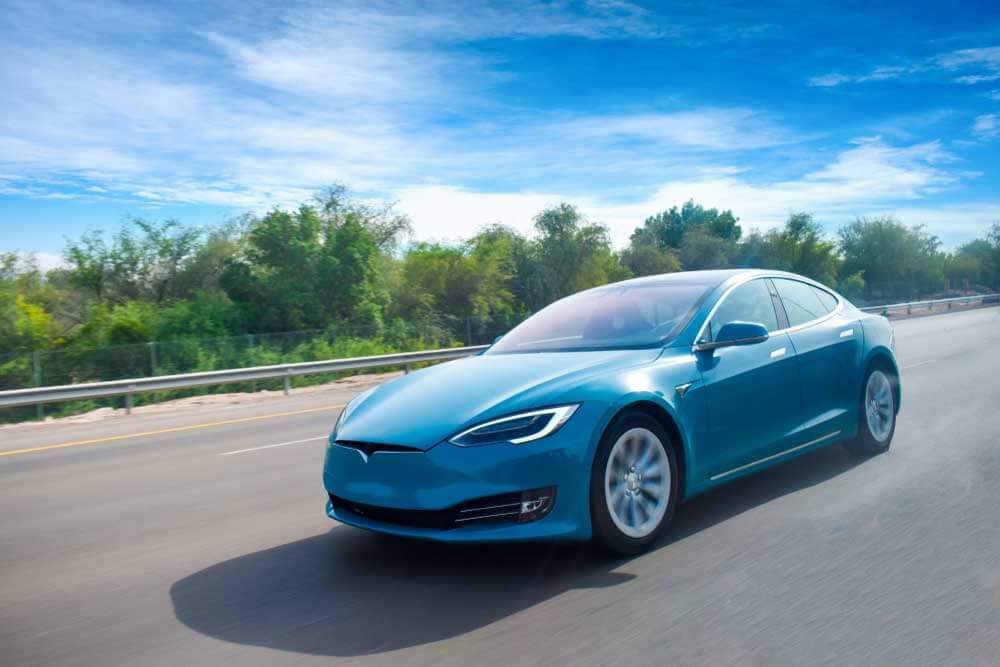As electric and autonomous vehicles (EVs and AVs) continue to reshape the transportation industry, understanding the complex legal and regulatory frameworks that govern these technologies becomes increasingly crucial. While the incoming administration may significantly alter the current landscape, which could impact the future of EVs and AVs in the United States, this article explores the current state of affairs.
Understanding Levels of Autonomy
At the federal level, the National Highway Traffic Safety Administration (NHTSA) leads regulations for both EVs and AVs. To facilitate discussions about AV capabilities, NHTSA has established five levels of vehicle autonomy ranging from Level 0 (no automation) to Level 5 (full driving automation):
- Level 0: No automation
- Level 1: Driver assistance
- Level 2: Partial driving automation
- Level 3: Conditional driving automation
- Level 4: High driving automation
- Level 5: Full driving automation
Conventional vehicles already on the roads today fall within Levels 0-2. NHTSA’s current regulatory focus revolves primarily around Levels 3-5. These represent higher levels of automation and pose significant challenges for policymakers.
Navigating The Federal Regulatory Landscape
The federal regulatory landscape for EVs and AVs continues to evolve. Although a comprehensive regulatory framework for these vehicles still does not exist, the agency has supplemented its existing legal authorities with EV/AV specific guidance.
General Rules of The Road
The general rules for the road emanate from the National Traffic and Motor Vehicle Safety Act (Safety Act). This act created the NHTSA and requires that all motor vehicles operating on public roads comply with Federal Motor Vehicle Safety Standards (FMVSS) unless otherwise granted an exemption. The exemption process can be time-consuming, as it requires public comment and that a manufacturer demonstrates a level of safety equivalent to that of conventional vehicles.
Absent a Safety Act exemption, EV/AV manufacturers must otherwise vehicles designed for conventional operation. This option potentially adds unnecessary expenses and performance limitations.
Nuro: The First Exemption
Nuro was the first company to receive a vehicle exemption from NHTSA for its purpose-built AV delivery vehicle. Reportedly, the company engaged with the NHTSA early in their development process, even before publicly unveiling their technology. This was crucial. It sought exemptions from three specific standards under the low-speed vehicle category: side-view mirror requirements, backup camera screen mandates and windshield requirements. Nuro successfully made its case for exemption by demonstrating how its vehicle design improved safety while rendering certain conventional features unnecessary.
Special Guidance
Whichever road a manufacturer chooses for Safety Act compliance, it must also abide by NHTSA guidance. For example, NHTSA updated its occupant protection standards in March 2022. It has issued four iterations of voluntary guidance. These include recommendations for manufacturers to submit voluntary safety assessments.
In 2021, NHTSA implemented a Standing General Order to gather data on crashes involving advanced vehicle technologies. This crucial mechanism required manufacturers and operators to report certain crashes involving vehicles equipped with automated driving systems (ADS) or Society of Automotive Engineers (SAE) Level 2 advanced driver assistance systems (ADAS). This order aims to provide NHTSA with timely and transparent notifications of real-world crashes associated with these technologies.
For ADS-equipped vehicles, entities must report crashes if the ADS was in use within 30 seconds of the incident and resulted in property damage or injury. For Level 2 ADAS vehicles, reporting is required if the system was engaged within 30 seconds of a crash involving a vulnerable road user (any person who is not an occupant of a motor vehicle with more than three wheels such as pedestrians, bicyclists, motorcyclists, wheelchair users and individuals using other non-motorized transportation methods) or resulting in a fatality, vehicle tow-away, airbag deployment or hospitalization. NHTSA makes the data collected through this order, subject to certain limitations, publicly available to foster transparency and inform ongoing policy discussions. (See: https://www.nhtsa.gov/laws-regulations/standing-general-order-crash-reporting#data)
While the Standing General Order represents a significant step in NHTSA’s efforts to gather critical safety data on AV/EV technologies, the lack of a holistic regulatory framework presents challenges for manufacturers and operators in these sectors.

State-Level Regulations
While federal regulations set a baseline, states play a vital role in governing AV and EV operations within their jurisdictions. At least 40 states have laws or executive orders related to AVs. None outright prohibits their operation.
However, state requirements present other hurdles as they vary significantly and address different aspects of these vehicles, such as the necessity for safety drivers, permitting processes, insurance requirements as well as battery safety and environmental impact standards. The National Conference of State Legislatures (NCSL) provides a comprehensive and up to date compendium of these laws (see: https://www.ncsl.org/transportation/autonomous-vehicles-legislation-database). California, Florida, Texas, Arizona, and Michigan have emerged as leaders in AV and EV testing and deployment due to their more favorable regulatory environments.
Infrastructure and Technology Considerations
In addition to regulatory gaps, the need for infrastructure upgrades remains another common concern surrounding both AV and EV deployment.
Utilizing Existing Infrastructure
Most AV manufacturers are developing their vehicles with a suite of sensors and technologies to navigate safely on existing roads and infrastructure. Relevant sensor technologies include lidar for detecting distances to objects, cameras for reading signs and traffic signals, short- and long-range radar systems as well as thermal cameras to enhance pedestrian and animal detection. This multi-modal approach enables AVs to maintain a 360-degree awareness of their surroundings and potentially even surpass the safety of a human driver, in certain respects. This strategy also alleviates the burden on cities and states to invest in costly upgrades.
The Electrification Concern
That said, as EV and AV adoption increases, the need for widespread charging stations continues to grow. More charging stations, in turn, presents challenges for power grid management. Areas of active research and development to address these issues include smart charging solutions and vehicle-to-grid technologies.
The electrification solution requires a whole-of-government approach between federal, state, and local governments, as well as private sector involvement. Many states and the federal government offer incentives for EV purchases and infrastructure development, which play a crucial role in accelerating change.
The Road Ahead
Regulators recognize that AV technology can drive economic development and job creation while improving safety by reducing human-caused traffic accidents. Additionally, electric AVs can contribute positively to environmental goals by lowering emissions and enhancing air quality. Finally, AV delivery services can improve access to essential goods for underserved communities.
Despite this, due to minimal progress in the regulatory landscape for AVs and EVs, the road remains a bit rocky. As in many other industries, the absence of comprehensive federal regulations creates uncertainty for manufacturers and operators. State-by-state legal variations complicate interstate operations and create roadblocks to scale AV technologies.
So what will it take to quick charge AVs and EVs?
Regulators face the ongoing challenge of balancing innovation with safety. They must foster an environment that encourages technological advancement while ensuring public safety. A holistic federal regulatory framework would provide clarity and consistency across the industry. A collaborative approach, which involves industry stakeholders, regulators, and policymakers, could effectively maintain safety, address existing challenges and remain adaptable to accommodate new innovations. Data sharing between AV companies and regulators could improve these collaborations and improve safety outcomes to inform policy decisions.
All the while, regulators must also build trust among consumers, which remains essential for widespread acceptance of both AVs and EVs. Public education could play a critical role in increasing awareness about AV technology. Understanding its benefits can help build trust among consumers.
Given anticipated changes in the federal government this year, with an administrative emphasis on less bureaucracy and regulation, will the required level of effort come to pass any time soon? Only time will tell. One thing is certain: only when we can foster innovation while prioritizing safety and public trust, can we unlock the full potential of autonomous and electric vehicle technology…and pave the way for a more efficient, accessible and sustainable transportation future.
*This article updates information from TechTalk with Akin podcast at: https://www.youtube.com/watch?v=2P6jSjw6rkM
Several challenges remain in the AV and EV regulatory landscape:
- Lack of comprehensive federal regulations: creates uncertainty for manufacturers and operators.
- State-by-state variations: complicates interstate operations and scaling.
- Balancing innovation and safety: regulators must strike this delicate balance.
- Public acceptance: building trust among the general public remains crucial.
EV and AV challenges also present opportunities:
- Economic growth: AV and EV technology can drive economic development and job creation.
- Improved safety: AVs have the potential to reduce traffic accidents caused by human error.
- Environmental benefits: Electric AVs can reduce emissions and improve air quality.
- Increased accessibility: AV delivery services can improve access to essential goods for underserved communities.

